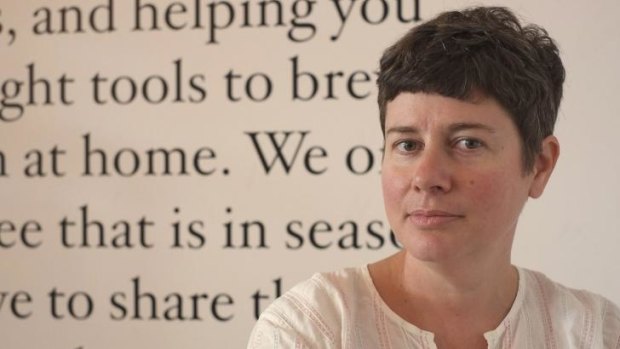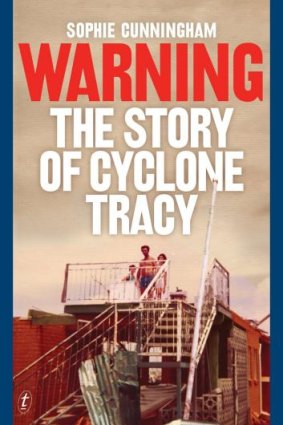By Owen Richardson
WARNING: THE STORY OF CYCLONE TRACY
Sophie Cunningham

Author Sophie Cunningham: An eye for stories and a knack for telling them.
Text $32.99
“Everyone’s dead and we’re the only people who survived,” thought 10-year old Bernard Briec, climbing out of the rubble. With Cyclone Tracy the abiding wonder is in the disjunct between the devastation and the casualty list: the photographs show a destruction it is hard to imagine anyone living through, so the death toll of 44 seems both shocking and surprisingly low.

Gripping: Warning – The Story of Cyclone Tracy by Sophie Cunningham.
Warning takes only 45 extremely vivid pages to deal with the night of December 24 1974 – one cringes again at the thought of fast-moving corrugated iron – and the rest of the book details the evacuation and the clean-up, the tensions amongst those responsible for the recovery, the psychological havoc wrought by the storm, and the forms it takes in cultural memory. (Declaration of interest: my brother, who works in disaster recovery for the Red Cross, is thanked twice in the acknowledgements.)
Along with an eye for good stories and a knack for telling them, Sophie Cunningham brings a contextualising political intelligence. What she is interested in is how natural disasters are also social and political events, and the period details amount to more than the sideburns and lairy shirts. If before the cyclone Darwin was a man’s town, for instance, it was even more so afterwards. Fearing starvation and disease, the authorities evacuated almost all the women, even if they did not want to go. The thinking was that the recovery was a man’s job to which women had little to contribute.
The evacuation may not have been a good idea, though Cunningham speaks to people who get angry at the wisdom of hindsight, but certainly it was poorly executed. The injured and traumatised were given little support. Families didn’t have enough choice over where they were sent, and the evacuation only served to exacerbate the rupture caused by the cyclone, so many did not return. The mass shootings of pet dogs was another instance of official insensitivity, adding trauma to trauma, and not just for the dogs’ owners: one of the policemen told to carry out the shootings had just spent a night watching over dead bodies.
Some examples of governmental ineptitude are more comic than anything else. When Gough Whitlam turned up at the recovery headquarters (three days taken out of an overseas trip: the opposition and the media gave him hell for it), his minions preceded him spraying fly spray to deodorise the sweating, unwashed workers. Some never forgave him.
Race also caused tensions. The Greek community came under suspicion: there were rumours that they were responsible for looting and even that they had dressed in women’s clothing to get themselves evacuated. (In other versions of the story it was the Chinese.) And it was a source of embarrassment to Stretton that the first man charged with looting was an Aborigine; when he tried to intervene he further provoked anxieties about the military takeover of the town.
On balance it appears that indigenous communities did not fare too badly directly after the cyclone, even if racism asserted itself here and there, and many more aborigines returned afterwards than whites. But as time wore on and reconstruction began, it seems they slipped further and further down the list of priorities.
What happens in natural disasters depends on how communities work; the effects and aftermaths of those disasters are in fact man-made. As the future promises more and more extreme weather events whose causes as well as effects are anthropogenic, Cunningham’s gripping book contributes to new ways of thinking about them.